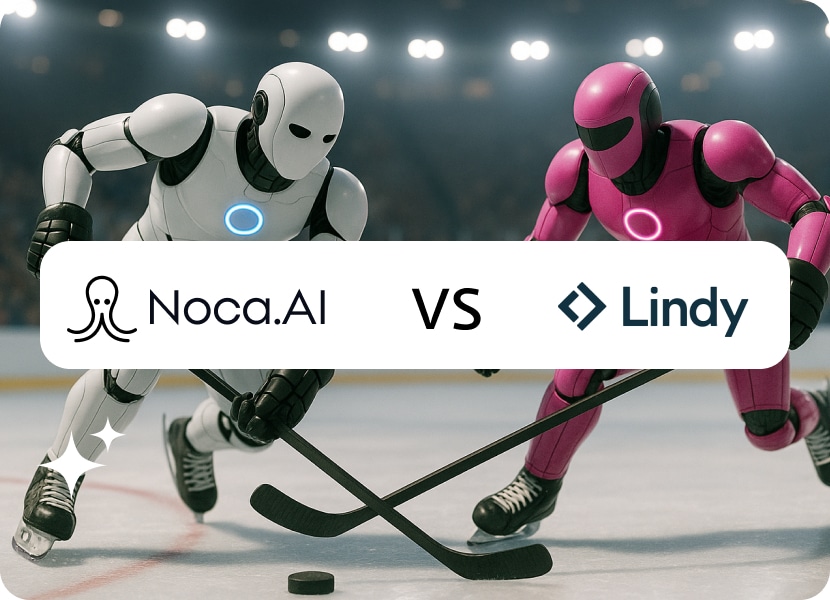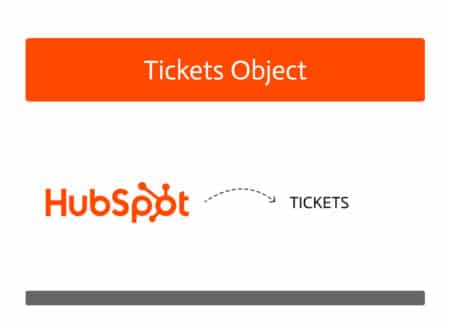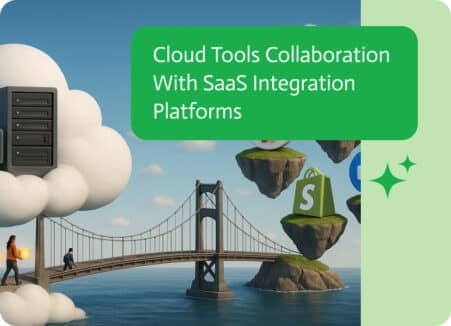

Noca vs. Lindy AI: Digital Employee Platforms
Every AI agents platform that exists makes a claim to be the “most powerful,” “easiest,” or “revolutionary” way to develop digital employees. The problem is that there are some intriguing distinctions when you look past the marketing gimmick and consider what these platforms can actually do. Today, we’re putting Noca vs. Lindy AI side-by-side to compare where their strengths lie and where they may fall short. They both subscribe to the same no-code concept, but how are they implemented? This is the point where things start to get a little more interesting.
One was built for businesses that need customizable AI employees integrated throughout their entire operational ecosystem. The other started as a personal productivity tool and evolved into something trying to be everyone’s artificial assistant.
What We’re Really Comparing
Let’s define “digital employee builders” before we get into it. You can use these for more than just connecting App A to App B to automate simple tasks. We’re referring to platforms that enable you to develop AI-powered digital workers who can interpret meaning, make judgments, and carry out multi-step actions across all of your company’s systems.
Meet The Platforms: Noca vs. Lindy AI
Noca: AI-First Digital Workforce
Noca’s goal is to assist companies in creating and implementing unique digital employees that work with current systems and carry out actual operations within your business. It’s not attempting to manage your calendar or serve as your personal assistant. Its main goal is to develop digital employees conditioned to managing entire business processes from start to finish.
Noca stands out for having an enterprise focus and simplifying the complexity of enterprise processes. It is designed for companies that require significant automation but are not willing or don’t want to invest months in implementation or rely on specialists to oversee the whole operation. They give users the chance to rapidly deploy digital employees, change them according to actual outcomes, and scale as your company needs to.
Lindy AI: The Personal Productivity Platform That Grew Up
Lindy AI began as a place for building personal virtual assistants, and that DNA still runs through everything it does. The founder literally named the platform “Lindy” because he wanted it to be more like working with a helpful assistant instead of feeling like you were configuring software.
By October 2025, Lindy had changed a lot. Claude Sonnet 4.5 (by default), GPT-5 and GPT-5 Codex, Gemini Flash 2.0, and Claude Haiku 3.5 are just a couple of models it now supports. Thanks to the collaboration with Pipedream Connect, the platform provides more than 5,000 integrations. New features include computer use capabilities that let digital employees use apps and go on websites, even if there aren’t regular connections.
But here’s the thing, Lindy was created to automate personal productivity tasks for both individuals and small teams. Although it has since grown to include business automation, it still retains architectural elements of its original design.
Setup and Getting Started: Noca vs. Lindy AI
Noca: Business Process Focus
With Noca, setup centers on deploying your first digital employee. You describe the business process you want automated, define your processes and decision logic, connect to your business systems, and start testing. Most businesses have functional digital employees handling real work within hours.
Need to adjust something? The digital employee’s instructions are conversationally updated. No rebuilding workflows from scratch, no navigating complex configuration menus. The platform changes the AI’s behavior based on what you say, and you keep moving forward.
Lindy AI: Template-First Approach
Lindy’s onboarding emphasizes its template marketplace. You can choose from pre-built digital employees for routine jobs like executive assistance, sales rep work, marketing, project management, customer support, recruiting, and research.
The platform’s “no-code interface” lets you put together automations using point-and-click configuration. Based on the “if-this, then-that” principle, you select triggers (like receiving an email or a scheduled event) and characterize the actions your digital employees should take. It’s familiar territory if you’ve used Zapier or similar automation tools.
However, reviews have shown that while Lindy describes itself as no-code, building complex workflows still requires technical know-how. The visual builder and natural language setup work great when it comes to basic automations, but sophisticated business processes will need a tad more effort than their marketing suggests.
Building Your Digital Workforce: Noca vs. Lindy AI
Noca: Customization of Complexity
Noca lets you build tailored digital employees for your unique processes, however unique they might be. You define the workflows, business rules, decision points, and your connection requirements. Noca’s AI architecture takes over while presenting straightforward options for defining how it reacts and responds.
Flexibility with processes that don’t fit standard templates is a key factor. You’re not trying to force your operations into someone else’s idea of how things should work. You’re building digital employees that execute your processes exactly as designed, with all the intricacy and nuance your business requires.
Lindy AI: Templates Plus Limited Customization
Lindy offers 100+ pre-built digital employees through its marketplace, covering common business functions. For many regular cases like basic emails, calendar scheduling, and simple customer support, these templates work effectively.
Lindy AI also has an Agent Builder for creating custom digital employees and Agent Studio (their low-code developer platform) for more complicated automations. However, some say that low-code often means you still need to know some code
Reviews indicate that custom digital employees require Lindy’s professional services team to set up properly, particularly for nuanced, multi-step processes. One review states that while Lindy claims a 95% success rate in getting custom agents to production, achieving that success rate often means involving their team, which adds time and cost.
The Computer Use feature, added recently, lets digital employees go through websites and fill forms for applications without APIs. That’s genuinely useful, but it has limits, since website redesigns can break automations, CAPTCHA systems may require workarounds, and some websites don’t even allow automated access in their terms of service.
Noca vs Lindy AI Integration Reality Check
Noca: Built for Business Systems
Noca’s integration approach prioritizes business systems and enterprise tools. It connects with CRMs, ERPs, databases, communication, and industry-specific software through robust connections and webhooks. If your business uses it, Noca likely integrates with it.
The architecture assumes you’re deploying digital employees across existing systems, not replacing those systems. Your AI workers operate within your current tech stack, executing processes that span multiple systems without requiring you to migrate to new tools.
Lindy AI: Breadth Over Depth
Thanks to a partnership with Pipedream Connect, Lindy boasts more than 5,000 integrations. The majority of consumer apps and well-known business tools are included in that impressive figure. Lindy is adept at common integrations such as Slack, HubSpot, and Gmail.
But just as important as breadth is depth of integration. Although Lindy has many app connections, reviews point out that occasionally the integrations don’t really give the level of detail control needed in terms of intricate business procedures. Triggers can start actions, but complicated info transformation and company rules frequently call for workarounds.
The platform’s origins as a personal productivity tool show in the integration design. It excels at connecting consumer apps for individual workflows; however, it battles with enterprise systems requiring complex authentication, validations, and fixing of errors.
Noca vs. Lindy AI: The Credit Confusion
Noca: Transparent Business Pricing
Noca offers straightforward pricing based on digital employee capabilities. The tiers scale as you need them to, from small deployments to enterprise workforces. Their options range from free to $150 for scale and then custom, so you can actually see what you’re getting and how much it costs before you commit long term.
Lindy AI: Credit-Based Complexity
Lindy uses a credit-based pricing model that sounds simple until you actually try to predict costs. Here’s the breakdown as of October 2025:
Free Plan: $0/month with 400 credits (roughly 40 basic tasks), 1M character knowledge base, 100+ integrations
Pro Plan: $29.99/month with 3,000 credits (up to 1,500 tasks), 30 calls per month, 20M character knowledge base, 4,000+ integrations, English-only support. Additional members will set you back $19.99/month each.
Business Plan: $199.99/month with 20,000 credits, unlimited phone calls, 30+ supported languages, 50M character knowledge base
Enterprise: Customized pricing with additional compliance features
Simple actions like messaging use few credits (7 for an email, 3 for a thread reply), while longer reasoning or multi-step workflows consume more. Phone interactions start at 265 credits, and voice calls cost $0.19 per minute using GPT-4o.
Additional credits cost $10 per 1,000, which sounds reasonable until you realize how quickly credits accumulate with active automation. The “up to 1,500 tasks” on the Pro plan means “if every task is simple.” Complex workflows consume credits faster.
The Real-World Usage Gap
Working With Noca
The focus of Noca’s everyday experience is on your digital employees carrying out their duties. You keep a keen eye on performance, modify processes in response to the real-world business outcomes, and spot new automation possibilities. The interface was created for workforce management, not individual productivity.
You can update digital employee instructions in real time as business needs transform. Without requiring you to rebuild workflows or navigate intricate configuration layouts, the platform converts your changes into modified behavior. For companies whose needs change in response to current market fluctuations, this iteration speed is something that is indispensible.
Working With Lindy AI
Lindy’s daily experience reflects its productivity tool roots. Its effectiveness for personal automation basics, such as calendar management, email and simple task workflows, is frequently mentioned in reviews. Lindy is also quite helpful when automating personal productivity for oneself or smaller groups of people.
Reviews vary, though, when it comes to business automation. “Well, yes, its pretty good at automating workflows, however, retrieving info of a more complex nature proves to be a lot harder in practise,” according to one analysis. “Complex decision trees call for careful setup, AI feeeback gets it wrong sometimes, digital employees deal with once-off scenarios unpredictably, and human judgment is often needed with the escalation of workflows,” said another.
Noca vs. Lindy AI Security & Compliance
Noca: Enterprise-Ready Security
Noca provides enterprise-grade security designed for those businesses who are almost certainly going to be dealing with highly sensitive info across multiple systems. The platform’s security architecture assumes you’re deploying digital employees with access to critical business infrastructure.
Lindy AI: Evolving Enterprise Features
Lindy maintains SOC 2 Type II, and other prominent compliance certifications as of 2025. Data is encrypted with AES-256. Business Associate Agreements are available for various organizations, while the Business and Enterprise plans include enterprise SSO, role-based access controls, and other necessary security features.
However, multiple independent reviews stated that “developing enterprise controls” remains a work in progress. One review stated, “Role management, audit logs, and versioning are still being built out, which can limit contol and governance especially for bigger teams managing sensitive workflows.”
Lindy AI currently operates as a cloud-only platform, which may limit control for teams with strict data-residency or infrastructure-hosting requirements. No self-hosted deployment option is available.
The Verdict: Noca vs. Lindy AI
Here’s what nobody talks about in platform comparisons: a tool’s origins fundamentally shape what it’s good at, regardless of how it evolves. Lindy was built as a personal productivity assistant, and that foundation shows in everything from the design to approach to the pricing model.
Is Lindy bad? No. For individual productivity automation, it’s actually quite good. The template marketplace makes getting started easy, the natural language setup works well for rudimentary workflows, and the credit system (once you understand it) provides a certain amount of elasticity for variable usage.
But there’s a massive gap between “good for personal productivity” and “ready for business-critical automation.” Reviews consistently note this distinction. Lindy works well for email sorting, calendar management, and simple task automation. But you can see it battle with business logic, sophisticated integrations, and the kind of mission-critical workflows that businesses actually need digital employees to handle.
Noca was built from day one for business automation, so the architecture, security model, integration approach, and pricing all reflect that focus. You’re not working with a personal productivity tool that’s trying to grow up ,you’re using a platform made for deploying digital employees and enabling AI app generation for fully functional business applications.


